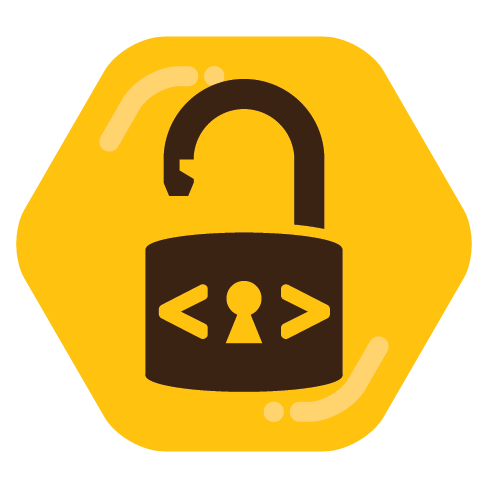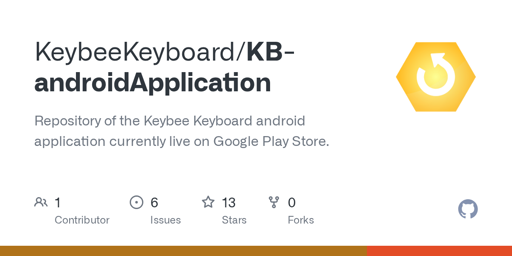- cross-posted to:
- opensource@lemmy.ml
- cross-posted to:
- opensource@lemmy.ml
cross-posted from: https://programming.dev/post/35901255
- Open Source
- Free to use
- No tracking
- Patent pending
I don’t know much about this stuff… But if I’ve understood patents right; Someone else can’t patent your idea if you can prove you have had it and used it before them, right? I know some good stuff like the 3-point safety belt was patented and then free to use by any car maker in the name of safety. Is that what is going on here?
The patent part just feels a bit off to me. What good is a patent if you are not going to exploit it?
I just don’t get it. I need a grown up to explain to me.
But if I’ve understood patents right; Someone else can’t patent your idea if you can prove you have had it and used it before them, right?
Yes.
I assume, the creator wants a fair share if somebody decides to use their keyboard in a proprietary software/device. The Apache license would usually permit this without compensation of the original creator.
Great concept but I the layout is completely different to qwerty. I don’t think I can ever get used to it.
It takes very few days to get used to a new keyboard. I tried neo and others and it’s easier than you think. I didn’t stick to it because it’ll not take off in the next 10 years as long as nothing fundamentally changes. I won’t be the weirdo using a different keyboard. You may type a little bit faster but you can’t think faster. At least in my case thinking takes more time than typing.
I did the swipe to complete an -ing suffix, and yes, I see the appeal!
Entering punctuation is a bit slow using long-presses on the apostrophe key. Maybe I can get used to using the symbol layer instead.
Oh! You can swipe from the 123 key to type a symbol from the symbol layer in one gesture! That’s great! It even works for comma! Kinda accidentally - given the comma position I’m swiping over question mark, backspace, comma which gets a net result of typing just the comma. I wish it would go back immediately to the ABC layer.
Moving the cursor by holding and dragging from space feels better than the similar feature in gboard!
I miss the gboard backspace feature where you can hold and drag to selectively delete.
Try it actually but there is no language switch no word suggestion and I would say this is nothing for people trained to query over years. Maybe my kids could learn a more ergonomic typing but I am definetly to old for this.
no word suggestion
this is the part i’m struggling with. autocorrect/predict is essential to touch typing, full stop. i am giving it an earnest shot, maybe a hex keyboard will let me type faster than qwerty with predictive, idk. But i remember predictive text being critical to getting used to touch-typing.
I’m glad to see an open source keyboard for a hex design. But I’m confused with the patents… Hex keyboards are not particularly new, I’ve used them years ago, so on what basis are they patenting it?
The patented properties are stated on the Github page:
read the related patent documentation (WO2014111963A3 and EP2946267A2) which can be recap with these three points:
- Hexagonal key structure which means that each key is connected to SIX other keys. Not less. Not more.
- The space key MUST be in the center of the Keybee Keyboard layout.
- The most frequent bi-grams, tri-grams or n-grams are linked between the keys.
Yet, the European patent (EP…) is probably already withdrawn (https://patents.google.com/patent/EP2946267A2/en).
Yeah, I saw the comment in github but it felt too surreal and without looking at the patent I didn’t want to assume anything. But hey thanks for the link to the actual patent, I have had a look at it, and read some parts of it and I’m still kinda confused about the whole situation with this keyboard.
The patent was published 10 years ago. It says it is withdrawn but I don’t know if we can somehow see the reason or if it was voluntarily withdrawn.
The patent itself recognizes that the hexagonal keyboard alone lacks on innovation to warrant the patent so the author proposes together with that the “best” order for different languages.
Then the code in github seems to have been uploaded 6 months ago. Maybe they withdrew the patent until they can show an example?
But how often do devs working on some free software code go through the trouble of making patents? And the code appearing such a long time after the patent… I don’t know, I don’t like throwing accusations without proof but the whole thing feels like they are more interested in the patent than creating the keyboard but I can’t be certain of it.
And then we get to the whole ordeal of the key positions, changing over different languages, trying to choose the optimal positions… I don’t think that it is enough to be patented (but I’ve seen worse so…) and likely it won’t ever be something people can agree on. Creating such “best” order would be impossible and probably each person would have different ideas. Now, predicting the next most likely letter… That would be more interesting but it was done ages ago too. And the most important aspect of what makes us fast typing is not the order of the letters, but the fact that we have muscle memory to reach them once we are used to a layout. As I use three different languages daily, using the same keyboard layout for all, is the best option, but with this idea I would need to change the layout of the keyboard… It would make me so incredibly slow!
And more in detail with the patent, many claims are borderline ridiculous. But this comment is already long enough so I’ll leave it herewith my final criticism for the author. Forget the patent, and just create a good keyboard that people want to use.
The patent was published 10 years ago. It says it is withdrawn but I don’t know if we can somehow see the reason or if it was voluntarily withdrawn.
They didn’t pay the annual renewal fee:
01.08.2018 – Application deemed to be withdrawn, date of legal effect [2019/02]
28.08.2018 – Despatch of communication that the application is deemed to be withdrawn, reason: renewal fee not paid in time [2019/02]And the most important aspect of what makes us fast typing is not the order of the letters, but the fact that we have muscle memory to reach them once we are used to a layout.
Some of the proposed applications of the patent are vending machines and car navigation systems . For vending machines, the aspect of muscle memory is probably not very dominant and thus, an optimised layout might be beneficial. Yet, as the layout is ‘different’ than usual, people usung the vending machines might also be confused and thus, the time benefit from the novel optimal layout is probably also non existent in that use case.
For the car navigation system it’s probably beneficial. After some time you probably have internalised the location of the letters and thus can type faster. For navigation systems it’s probably not a frequent use case that the keyboard language and thus its layout is changed regularly.
For a smartphone keyboard, I agree, it’s odd if you have to search for the location of the same letter on different layouts at different places.






